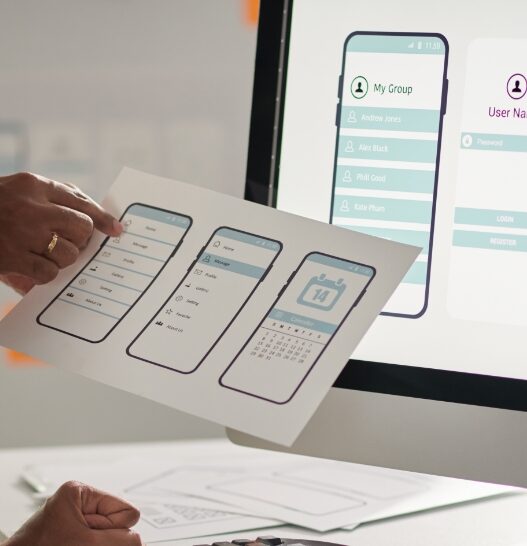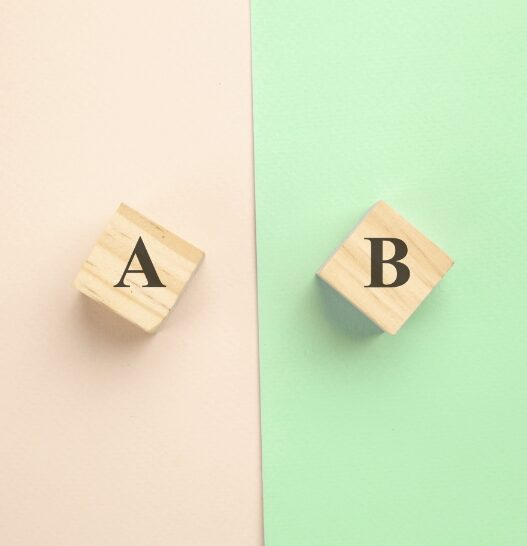This article is about the connection between usability & user experience and money. In our company practice we often hear that usability & user experience “have to be paid for first” and that “first you do the technology and then you make it beautiful”. I already explained why this doesn’t work in the last blog post “The agony of (usability and user experience) – method choice”. In this post, I would now like to explain why this way of thinking does not make sense from an economic point of view either. Why is it possible to save money and even earn more money with usability & user experience now? Three reasons:
1. consideration of usability & user experience in the development of a product directly saves money and increases sales / profit.
By taking usability & user experience directly and consistently into account from the very first product idea, you can identify the functions of the product that are important for the later user – or not – right at the start of development. This allows you to focus right from the start on the functions that users need and would like to have, thus saving you the detailing and development of functions that later disappear from the product because they are not used. Furthermore, the focus on the later user allows you to adapt the architecture of the product (e.g. the structure of the data model of a database) to the needs and wishes of the user. With these fundamental decisions at the beginning of a development, the total costs of the project are significantly influenced (see Figure 1). Unfortunately, we experience time and again that users express functional wishes in user tests late in the development phase, which can then no longer be integrated or only with great modification effort (and thus high costs). This wastes a lot of potential for adapting the product as well as possible to the user and ultimately selling it.

Figure 1: It is precisely at the beginning of a development that the opportunity to influence costs is greatest. In order to avoid making fundamental mistakes here (and thus high costs), you should know as well as possible which functions the product will later contain. Early usability & user experience tests as well as user surveys help you here. [Figure according to Ehrlenspiel 2014: Cost-effective development and design].
In addition to the direct cost-saving opportunities due to the avoidance of erroneous developments of individual functions or the entire product, costs can also be saved indirectly by focusing on usability & user experience. As already described, by focusing on users you know very early in the development process which functions you should develop and which not. This allows you to develop your product more efficiently, so that the time-to-market decreases. At the same time, the time savings also reduce development costs.
The faster time-to-market also has another effect: In a time of fast-growing competitors with similar ideas, the time saved can be worth cash money, since, for example, a larger target group is still available or you can even launch your own product on the market before the competition. In addition to the cost savings described above, this can also generate even greater sales / profits.
Statistics from practice:
On average, about 47-66% of the lines of code in a software project are related to the user interface (inuse 2013). Sensible planning and testing with users is therefore essential to work highly economically!
Rapid development is the key to a commercially successful product. If the release of a product is delayed by one quarter, the profit of the product is typically reduced by 50%. (Conklin 1991)
2. products with high usability & user experience sell better and are seldom returned
Think about how you buy new products for yourself privately. Maybe you are one of those people who inform themselves in advance and compare product functions in order to find the best product on this basis. However, you have probably also bought products based on the brand, the advertising or the associated image. Both buying behaviors are widespread and, although they may seem completely different at first, they have something in common: as a buyer, you don’t want a bad product. Once you have decided on a product and try it out for the first time, you already have certain expectations of the product. For example, you want to try out the advertised huge optical zoom of your new digital camera right away. But what happens when you can’t operate the zoom right away, or perhaps can’t even turn on the digital camera? Disillusionment sets in, which can even lead to you deciding that a product you have just bought is “not so great after all” and returning it. This (or something similar) is the case for 48% of all returned products, which, according to a study (Ouden et al. 2006), function perfectly technically but are no longer appealing.
Poor usability & user experience can therefore directly lead to a product being returned after purchase, thus incurring costs. Furthermore, it is likely that the disappointed client will talk about his experience. If the client does this not only in a small circle, but via product reviews on the Internet, many potential buyers will get a hint that the product might be complicated to use. Now please consider how you personally react when you read such a notice about a product you might want to buy. It is very likely that you will at least look for other alternatives that have better usability. This amplifies the effect of one dissatisfied client on many others who suddenly start looking for alternative products. Poor usability & user experience therefore almost always lead to lower sales figures and thus to a commercially unsuccessful or at least less successful product.
With a very good usability & user experience, on the other hand, this effect can also turn positive and be the deciding factor for a product purchase. Recommendations from other people ultimately always lead to new clients and thus to more sales / profit.
Statistics from practice:
A study by Creative Good 2000 found that an increase in customer satisfaction for various products resulted in an average of 40% more sales. Therefore, if customer satisfaction increases through very good usability & user experience, more products will be sold!
Usually simple usability & user experience measures achieve a traffic or sales increase of 100% or more. (Nielsen 1999)
3. products with high usability & user experience have lower support and maintenance costs
In the third point I would like to discuss what happens to a product that does not work as the user expects but continues to be used. This is the case, for example, when the user is not the buyer (e.g. in B2B) or the problems are not so big that the product was exchanged directly. In this case, when using the product, there will always be questions or problems that the user cannot or does not want to answer or solve on their own. In most cases, users solve these types of problems by contacting product support. This incurs additional costs for you after the sale of the product, as you have to solve the problems of your clients. If these problems are due to poor usability & user experience this is particularly annoying as these costs could have been avoided in the first place. Additionally, of course, your clients would be happier if they didn’t have to call.
In addition to support costs, most products also incur maintenance costs. For example, you need to continually test and update software when, for example, a new operating system or operating system update is released. You also have to keep updating security holes in your software or in the third-party software you use in order to keep your clients satisfied. If you now have a more complex product with many functions that are not or only seldom used by most users, the maintenance effort is correspondingly greater. Since the focus on the user described above helps you to include only the right functions in your products, you only have to maintain these functions. You can save the rest.
Statistics from practice:
Focus on usability & user experience reduced support calls at McAfee by 90% (Software CEO 2004)
80% of software product fixes are user interface issues. The remaining 20% are bugs in the “actual” functions of the program (Creative Good 2000)
80% of the costs of the entire life cycle of a software are in the maintenance phase and are related to “not foreseen” or “not achieved” customer requirements and other usability problems (Nielsen 1993)
Conclusion
In summary, just by consistently focusing on the future user, you can achieve shorter development times, greater customer satisfaction, better product ratings, and a higher recommendation rate. In addition, you will also save immensely on support and maintenance costs, and in addition to the cost savings, you can also achieve higher profits / revenues. So the question should not be how you can afford usability & user experience. Instead, you should ask yourself if you can afford / want to do without the benefits of usability & user experience.
But aren’t usability & user experience measures incredibly expensive? In the next blog post (to be published in early April), I will explain why usability & user experience measures don’t have to be expensive and how you can get expert and user opinions on your product for very little money.
Image source: eyetronic / Fotolia.com



